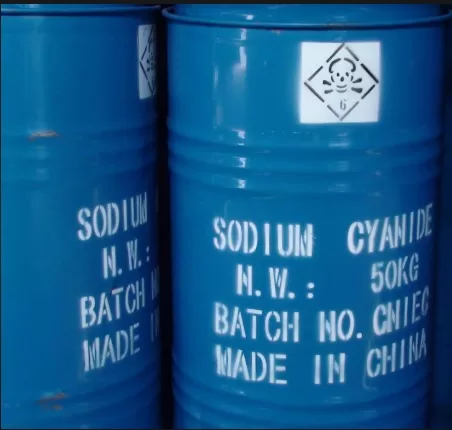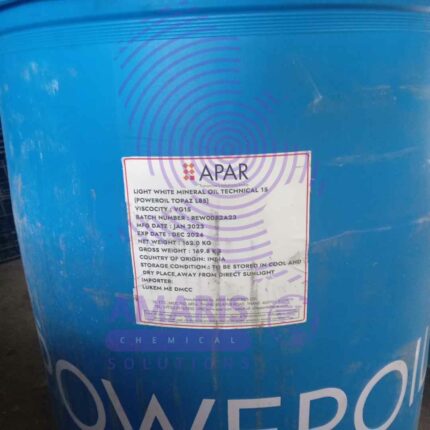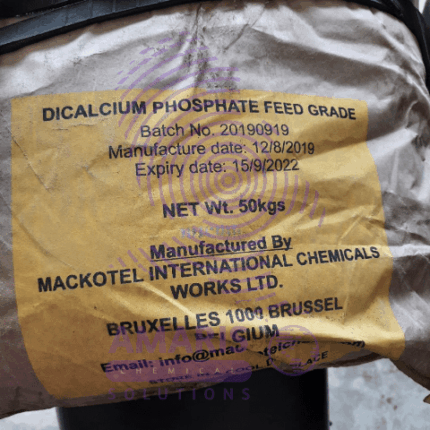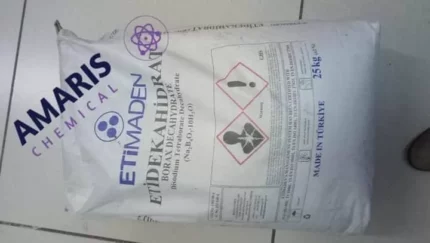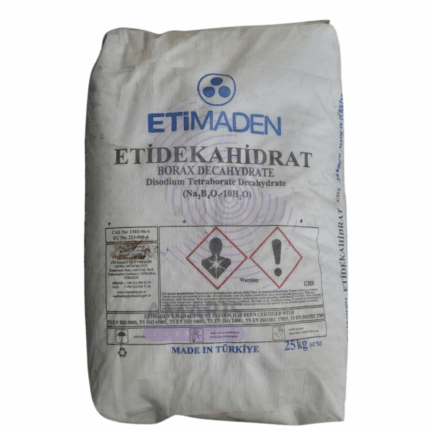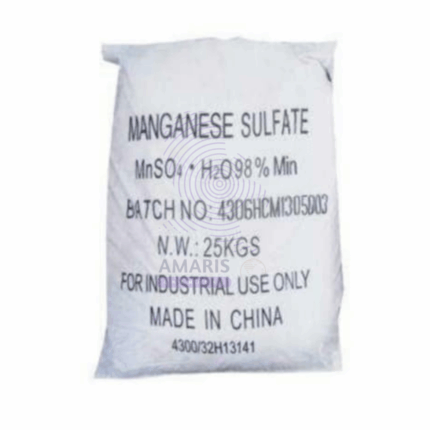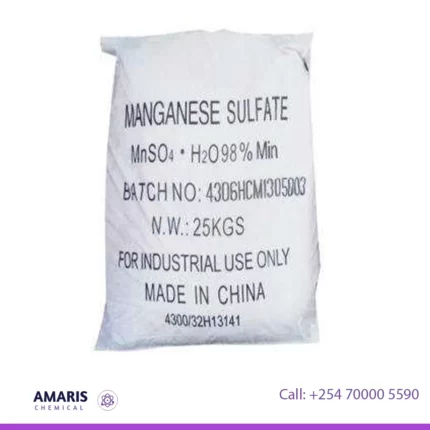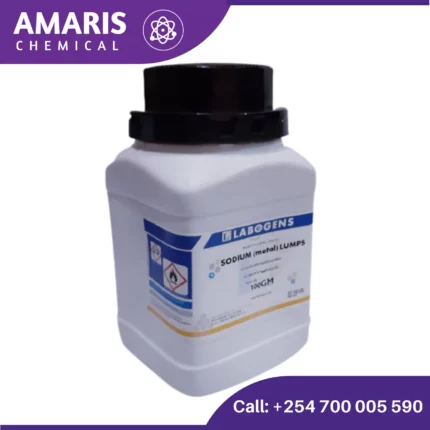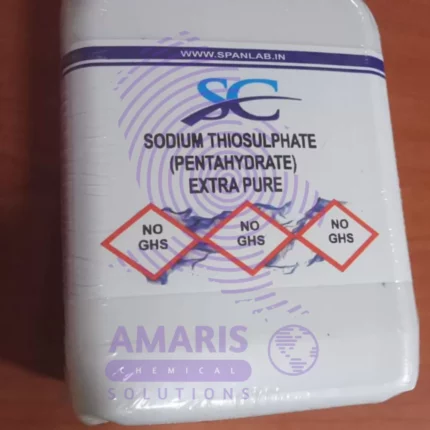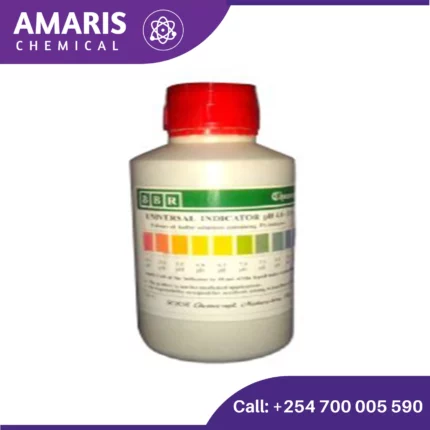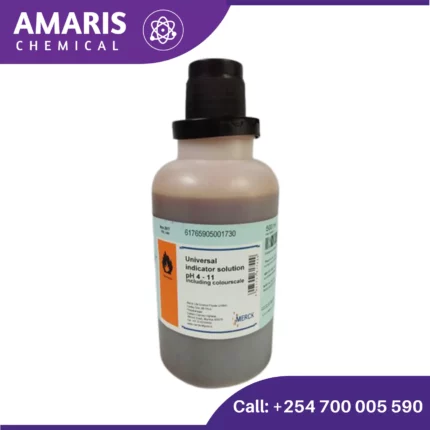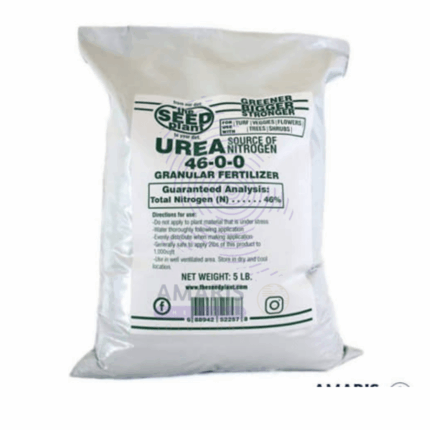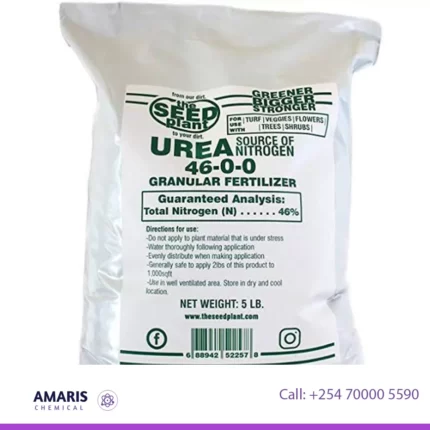“Hydrofluoric acid 25kg (HF) 50%” has been added to your cart. View cart
“Hydrofluoric acid 25kg (HF) 50%” has been added to your cart. View cart
Sodium cyanide
SKU:
ACS81653CHEM0
Categories: Analytical Reagents, Leaching Agents
Shipping & Delivery
Related products
Borax Decahydrate 25kg
Borax, also known as sodium borate, is a naturally occurring mineral composed of sodium, boron, oxygen, and water. It is a white, odorless powder that dissolves easily in water, and has a wide range of uses, including as a laundry detergent booster, a multipurpose cleaner, and as a component in the production of glass, ceramics, and enamel. Borax has antifungal and insecticidal properties and is also used in certain industrial applications such as in the production of fiberglass, as a flux in metallurgy, and as a fire retardant. It is considered safe when used as directed, but can be toxic if ingested in large quantities.
Hydrofluoric acid 25kg (HF) 50%
Hydrofluoric acid (HF) is a strong, highly corrosive, and toxic inorganic acid. It is a colorless liquid or gas that has a pungent odor and is highly soluble in water. Hydrofluoric acid is composed of hydrogen and fluorine atoms and has a chemical formula of HF. It is one of the most dangerous acids known, capable of dissolving many materials, including glass, ceramics, and metals. It can cause severe burns to the skin and eyes and can be lethal if ingested or inhaled in sufficient quantities. Due to its unique properties, hydrofluoric acid is used in various industrial processes, such as etching glass, cleaning metals, and manufacturing of electronic components
Sodium Metal 100gm
Chemical Formula: Na
Appearance: Sodium metal is a soft, silvery-white, highly reactive metal. It is shiny when freshly cut but tarnishes rapidly in air due to oxidation.
Physical Properties:
- Atomic Number: 11
- Density: 0.97 g/cm³ at 20°C
- Melting Point: 97.79°C (207.02°F)
- Boiling Point: 883°C (1621°F)
- Hardness: Sodium is soft enough to be cut with a knife.
- Reactivity: Sodium is highly reactive, especially with water, producing sodium hydroxide and hydrogen gas. This reaction is exothermic and can be explosive. 2Na+2H2O→2NaOH+H22Na + 2H_2O → 2NaOH + H_22Na+2H2O→2NaOH+H2
- Oxidation: In air, sodium rapidly oxidizes, forming a layer of sodium oxide (Na_2O).
Sodium Thiosulphate Pentahydrate
Analytical Reagents, Disinfectants and Biocides, Excipients, Leaching Agents, Wastewater Treatment Chemicals
Sodium thiosulfate (Na2S2O3) is an inorganic compound that is commonly used as a photographic fixer, as well as in medical and industrial applications. It is a white crystalline powder that is soluble in water and has a mild odor. In photography, sodium thiosulfate is used to remove unexposed silver halide from photographic prints and negatives, making the image permanent. In medicine, it is used as an antidote for cyanide poisoning, and in industrial applications, it is used as a reducing agent, a dechlorinating agent, and in water treatment processes.
Urea 50 kg
Urea is an organic compound with the chemical formula CO(NH2)2. It is a crystalline substance that is highly soluble in water. Urea is produced naturally in the bodies of mammals as a byproduct of protein metabolism and is excreted in urine. It is also synthetically produced on a large scale for various industrial applications.
In simple terms, urea is a nitrogenous compound that contains two amine groups (-NH2) attached to a carbonyl group (C=O). It plays a crucial role in the nitrogen cycle, serving as a primary vehicle for the excretion of nitrogenous waste in mammals. Urea is commonly used as a fertilizer in agriculture due to its high nitrogen content, and it is also utilized in the production of plastics, resins, adhesives, and various other industrial applications.

